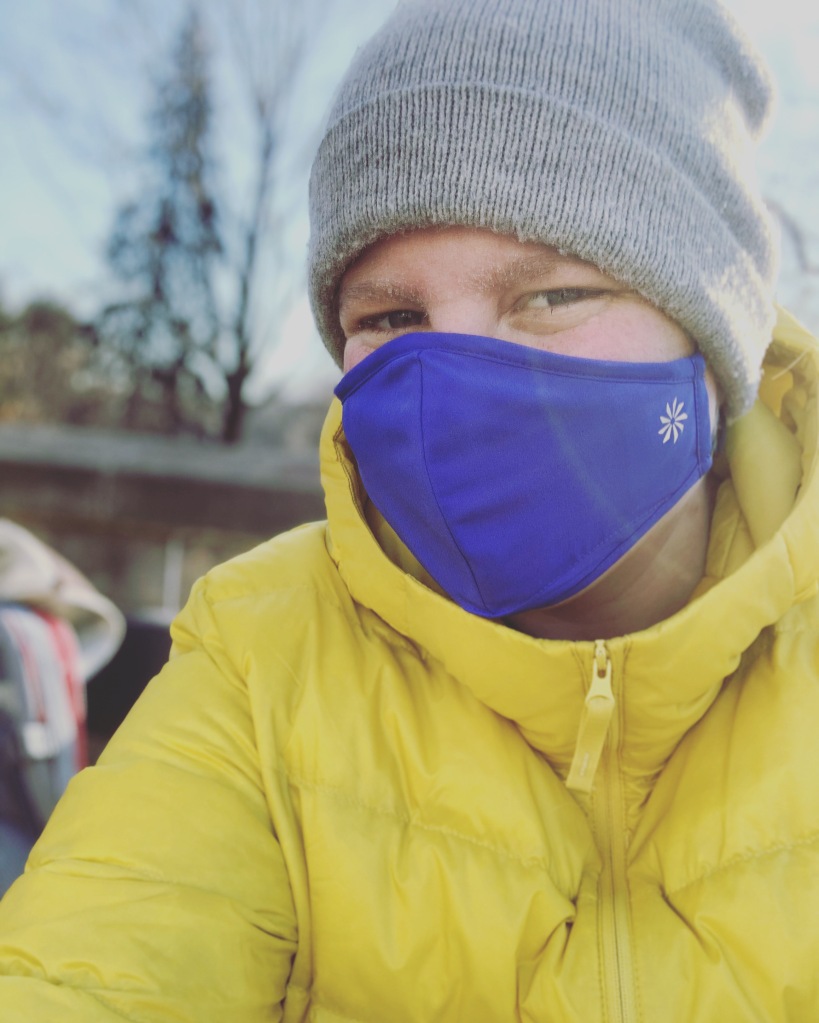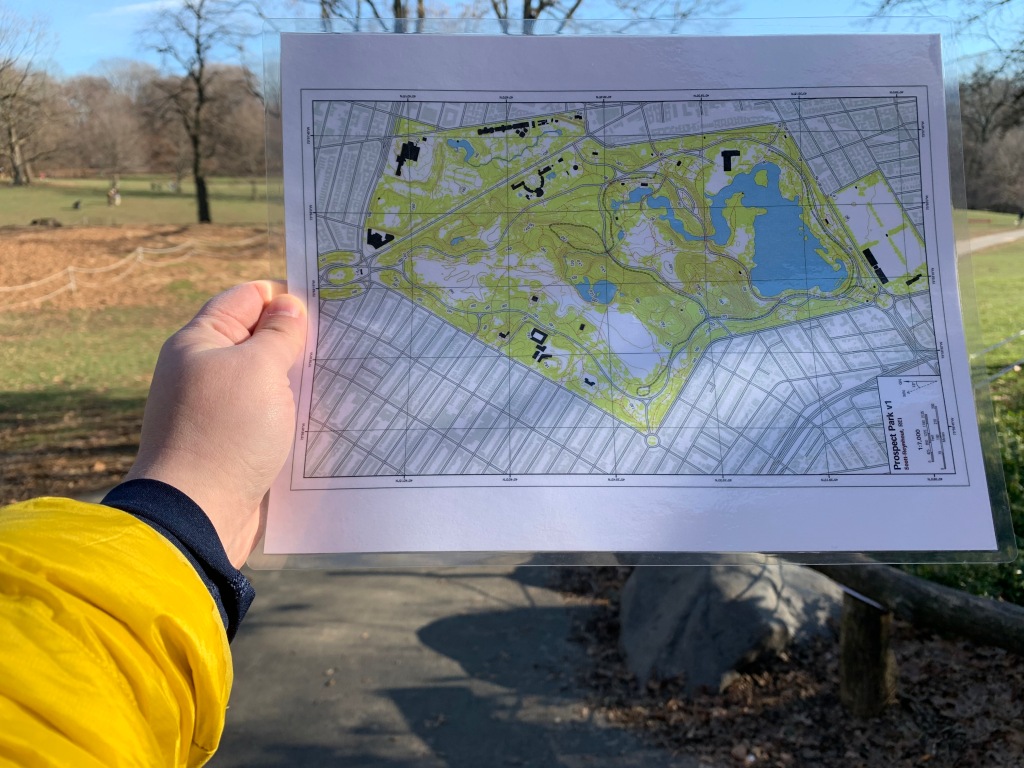*Shoutout to REI for the their Wilderness Survival: Winter Skills class and to our guide KATE for any links provides within*
How are we surviving 2020? It’s as good a question as any. It’s been a strange year to say the least. With the Pandemic and COVID-19 continuing to spread and infect the world, our worlds have been turned inside out. Life is not what we thought of it as just a year ago. Whether we have lost loved ones, have faced depression, or are just bored out of our damn mind due to the Pandemic woes, we –you and me, if you are reading this, have one thing in common: We are finding ways to survive this year together: to get through, to cross the bridge over the trenches and make it to the sunshine, to the rainbows, to what hopefully is a brighter other side. We aren’t sure when we’ll get there, but perhaps, we can start building that bridge sooner than later.
To help get me through, I’m hobby hoarding again: looking for things I’ve never tried before, never learned before, never understood before, and diving in. If Hobby Hoarding saved me once–then I strongly believe it will save me again.
And how apt is it that one of the first new hobbies I’ve tried this winter is a Winter Survival Skills class through REI.
Through the class, our guide, Kate, took us through a series of lessons on how to best survive in the wilderness in the winter. Kate’s got a pretty sweet background: She’s currently getting her PhD in medical anthropology and does A LOT of her time in Madagascar. Today, Kate braved the colder climate lower temps of Brooklyn, New York to drill home important ways to handle less-than-ideal circumstances. I found it overall to be a good metaphor for this year:
First prepare so you avoid a shitty situation (not always feasible)—and then brace yourself for the worst by having knowledge and a plan for success.
The first key step to survival is actually not having to “survive” —it’s prevention. We want to be as prepared as possible for whatever may come. If you are going to go to the store in the pouring rain, you’ll probably bring an umbrella to keep from getting wet—so when you’re going to go out in the woods–you want to bring your “umbrella” of survival. For hikers, your “umbrellas” are known as your 10 Essentials.
1. Food and (extra food)
2. First Aid Kit
3. Sun Protection
4. Knife and Tools
5. Headlamp
6. Extra Clothes
7. Matches (lighter, etc)
8. Water & Extra Water & ways to protect water – Water filtration/purification systems
9. Map & Compass
10. Emergency Bivvy (shelter / protection)
Assuming you have these essentials, you are starting out well, but as we know, no matter the prep–things can still go wrong.
Here are some additional keys to survival I picked up while at my REI course (this list is not exhaustive):
- Pack your bag appropriately — That means with the 10 essentials, but that also means CHECK and manage your essentials. Don’t just assume they are there. Keep your gear in shape: make sure your matches are waterproofed, your first aid kit is full, and your tools are sharp enough.
- Leave a plan
- Don’t leave home without giving someone–anyone a heads up where you’re going and when you’ll be back.
- Before hitting the trail, leave a note in the glove compartment of your car with all the information regarding where you are going so if you don’t return, rescuers have a starting point.
- Use the registry books. They aren’t guest books. The books let forest people know who’s come in, and in some cases who hasn’t made it out. Also, if there are various registry books along the trail–continue signing them as these can let others know where you last were.
- Layering
- Make sure your layered appropriately for the weather. This includes starting with a base layer that is moisture wicking, then adding a middle layer or two of looser fitting clothing (NON COTTON–perhaps, wool); and a final outer water resistant shell.
- Make sure your layered appropriately for the weather. This includes starting with a base layer that is moisture wicking, then adding a middle layer or two of looser fitting clothing (NON COTTON–perhaps, wool); and a final outer water resistant shell.
- Map and Compass
- Know how to read a map and compass. Don’t rely on GPS/cell phone/etc. You may lose battery, service, etc.
- Learn how to read the sun–in case your compass breaks or you just really have no idea where you are.
- STOP: If you’ve arrived a juncture of your day where you realize OH SHIT, I’m lost; someone’s in danger, or I need to give up for the day: Consider the phrase: STOP.
- S – Stop- Literally stop. Take a breath. Stand down.
- T – Think – take in everything around you and think about your circumstances.
- What time of day is it?
- Where were you when you started?
- When is it going to get dark?
- Do you know which way North is?
- O – Observe – Like Think, really take in your surroundings so you understand your stakes and what is possible in this moment.
- P – Plan – Make a plan – and prioritize —rely on your 10 essentials and remember these 4 rules of 3 to prioritize:
- 3 Minutes – You can survive for 3 minutes without oxygen
- 3 Hours – You can survive 3 hours without protection from the elements.
- 3 Days – You can survive 3 days without water.
- 3 Weeks – You can survive 3 weeks without food.
- Understanding how we maintain and lose heat
- There are a variety of ways that we lose and maintain heat:
- Through Conduction
- Through Convection
- Through Radiation
- Through Evaporation
- Through Respiration
- There are a variety of ways that we lose and maintain heat:
- Frost-bite
- Frost-bite will affect your most exposed extremities: Nose; fingers; toes; lips/
- Frost-bite is often talked about in degrees or thickness:
- First Degree through Third Degrees OR
- Partial vs Full Thickness
- SIGNS:
- DO NOT tolerate Numbness. Numbness is the first sign.
- If there’s numbness–warm things up (avoid using breath and rubbing aggressively)
- Stick hands in warm spots
- Work on REHEATING
- Gentle Conduction
- Look for BLANCHING and LOSS OF MOVEMENT
- Take off anything constricting (think Wedding Ring)
- DO NOT pop any blisters.
- WRAP up affected areas–warm it up– and protect
- SEVERE – REQUIRES ER/EVACATION/HOSPITALIZATION
- Look for stiffness/discoloration
- DO NOT tolerate Numbness. Numbness is the first sign.
- Hypothermia- Hypothermia starts with something a simple as shivering.
- TO DO
- Keep moving
- Mittens vs Gloves
- Eat something
- Drink hot drinks
- PROGRESSION – Hypothermia progresses QUICKLY
- Body Temp of 95 to 90 degrees F
- You might have the “umbles” –someone will begin mumbling/fumbling/stumbling. Appear delirious
- Go inside asap; turn back; shelter; get warm.
- Body Temp of 90 to 85 degrees F
- This is considered severe
- Might appear belligerent and more delirious.
- Get hot liquids asap, wrap in blanket, multiple blankets, pass your body warmth onto the person.
- Body Temp of 85 to 80 degrees F
- Incredibly dangerous — preceding death
- ***PEOPLE ARE NOT DEAD UNTIL THEY ARE WARM AND DEAD–if you find someone and they are still cold, they may still be alive as cold can preserve humans—still try to save them.
- Body Temp of 95 to 90 degrees F
- TO DO
- Setting up camp/Shelter
- Set up camp x # of feet from water.
- Set up camp away from your food/any waste/or trash. All of these will bring animals.
- Look for a flat area — If you’re on the bottom of a hill and it rains….I wouldn’t want to be in that tent.
- Look out for old, dead trees. These are more likely to fall in various weather conditions and if an old tree is swaying above your tent, it’s a danger to you and whoever is in your tent.
- Build a shelter if you don’t have a tent
- Additional ways to prepare and learn for future incidents:
- Learn to build a maintain a fire
- Learn a variety of knots for tying
- Learn and RELEARN map and compass
- Understand and research camping stoves for your needs
- Understand your gear and gear you may need.
- Crampons vs microspikes vs snow shoes.
Of course, there’s the lesson of: Enjoy yourself and have fun, but the best way to truly enjoy yourself is to be prepared–don’t go out without a plan–and get ready to improvise when a plan goes to shit: Kind of like 2020.
With that said–I’ve got a lot of hope for 2021–so let’s do this–let’s get to this next year and do our best to not just survive this next loop around the sun–but truly thrive.






Nice work.
________________________________